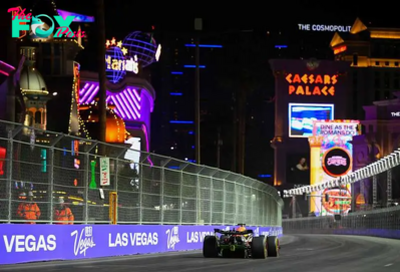Sports
How much horsepower does the Indycar have? What elements are the same in all the teams?
In recent years, IndyCar and Formula 1 have surged in popularity. Although they both feature single-seat open-wheel race cars, the similarities largely end there. The most striking difference between the two series is the cost of building and maintaining a competitive car.
A competitive IndyCar, including parts for various tracks, testing, and enough engines and gearboxes for a season, costs around $3 million. This is relatively economical compared to the staggering $14 to $20 million price tag of a Formula 1 car. And that’s just for one car and engine without spares, not accounting for the millions spent designing and developing each unique chassis.
In Formula 1, each constructor must design their own car within FIA regulations, leading to variations in chassis and aerodynamics. Teams can even face penalties for copying another car’s design, as Racing Point did in 2020 when fined for using parts that were too similar to the previous year’s Mercedes.
IndyCar built
IndyCar takes a different approach by using spec components—parts identical for all teams and purchased from third parties. This significantly reduces costs. For instance, all IndyCar chassis and aerodynamic parts are designed and built by Dallara, an Italian manufacturer. Teams can buy a pre-made chassis for $349,000.
One downside of using spec parts is the lack of innovation, unlike in Formula 1, where individual teams push the sport forward with new designs. However, this also means that no team can dominate IndyCar by outspending or out-engineering the competition.
Engines
IndyCar has just two engine manufacturers, Honda and Chevrolet, with engines costing around $125,000 each. Despite the lower cost, these 2.2-liter V6 engines are state-of-the-art, producing up to 750 horsepower. While F1 engines cost around $11,000 per horsepower, IndyCar engines cost only $167 per horsepower.
Fuel economy is another area where the two series diverge. Formula 1 cars are limited to 110 kilograms of fuel per race, with no refueling during pit stops and a maximum fuel flow rate of 100 kilograms per hour. IndyCars, with smaller 70-liter fuel tanks, refuel during pit stops and have no limitations on fuel use or flow rate, allowing for a more straightforward approach to achieving power.
Even with unrestricted fuel use, IndyCar regulates turbo boost, varying it between 18 and 24 PSI depending on conditions, allowing for power between 550 and 700 horsepower. Drivers can briefly increase boost to 24 PSI with a “push to pass” button, unlike F1′s DRS system, which only reduces drag under specific conditions.
Budget&Accesibility
The FIA has implemented a budget cap of $145 million per team to control Formula One costs. However, engine development and other expense exemptions mean that top teams can still spend significantly more. In contrast, the annual budget for an IndyCar team is approximately $10 million.
Despite the higher budgets, F1 cars have a lower top speed than IndyCars. The fastest speed recorded in an F1 race is 231 mph, achieved by Valtteri Bottas in 2016. IndyCars, on the other hand, regularly reach speeds of 236 mph during laps at the Indianapolis 500.
The different speeds can be attributed to the distinct designs for each series. F1 cars, optimized for cornering speed, generate over five Gs of downforce, which limits their top speed but enhances cornering grip. This downforce increases the car’s effective weight, reducing the power-to-weight ratio. IndyCars, designed for ovals and road courses, can adjust their aerodynamics to reduce downforce, allowing for higher top speeds. IndyCar’s use of spec parts extends to aerodynamics, with each team receiving the same aero package for about $70,000. This package is less sophisticated than F1 aero but is sufficient for the varied tracks on which IndyCar races.
While F1 showcases cutting-edge technology and engineering battles, IndyCar focuses on cost-effective competition and accessibility. This approach attracts a diverse range of drivers and keeps ticket prices low. Fans can watch an IndyCar race for under $50 and get a pit and paddock pass for around $100, making it a more fan-friendly experience than the thousands of dollars needed for similar access in F1. Ultimately, the different philosophies of IndyCar and Formula 1 result in unique experiences for drivers and fans, each appealing and challenging.
-

 Sports4h ago
Sports4h agoFamed North Carolina Bar Calls Out Taylor Swift Ahead of Chiefs-Panthers NFL Game
-

 Sports4h ago
Sports4h agoCleveland Browns QB Jameis Winston’s Pregame Interview Goes Viral: ‘I Want Him to Give My Eulogy’
-

 Sports8h ago
Sports8h ago2024 RSM Classic: How much does it cost to be a member at the Sea Island Golf Club? PGA Tour
-

 Sports8h ago
Sports8h agoHow does Formula 1 qualifiying work? Rules and format for Las Vegas Grand Prix
-

 Sports10h ago
Sports10h agoReggie Bush Is a Big Fan of Breakfast Foods — And So His Family (Exclusive)
-

 Sports10h ago
Sports10h agoJason Kelce Is Getting His Own Late-Night Talk Show on ESPN
-

 Sports14h ago
Sports14h ago2024 RSM Classic: Round 2 Friday tee times, pairings and featured groups | PGA Tour
-

 Sports14h ago
Sports14h ago2024 CME Group Tour Championship: Round 2 Friday tee times, pairings, and featured groups LPGA Tour























